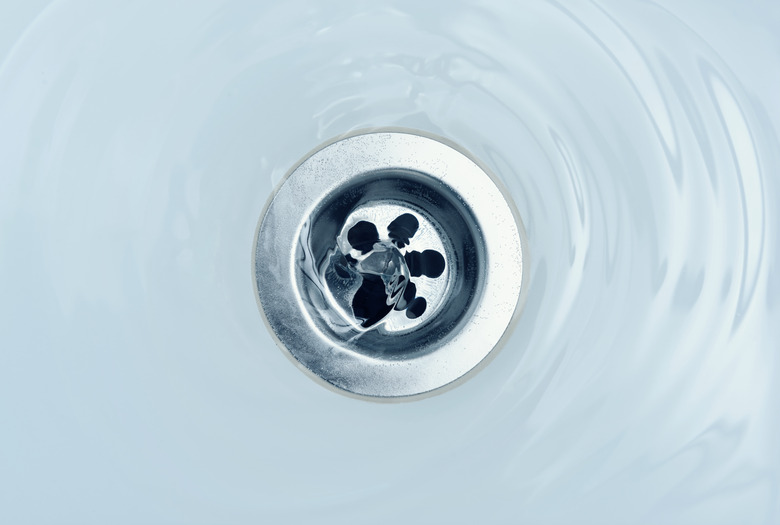Brass Tub Drain Vs. PVC
We may receive a commission on purchases made from links.
A tub drain has several specific jobs to do that other drains do not. It must be fairly easy to clean, react equally well to all temperatures and should inhibit corrosion and the buildup of slime and bacteria. Brass contains zinc, which is a natural anti-corrosive and inhibits the growth of unwanted organisms.
Yet PVC manufacturers claim that plastic is easier to install and can work under all temperatures. Either is common in bathroom plumbing applications. Generally, installing or changing a bathroom drain is easier than installing the water supply system, so if you are considering a switch, you've chosen the right project.
Benefits of PVC Drains
Benefits of PVC Drains
Plastic drains and pipes resist corrosion about as well as brass, according to some PVC manufacturers. PVC drains are generally more flexible, though brass, among the metals used for drains, is the most malleable. PVC is lightweight and easier to work with, whereas brass often requires more specialized labor. Plastic drains are self-insulating and, because they are smooth, do not create slime deposits. They are also known for tight fittings, making them more waterproof and leakproof than brass.
PVC is frequently used for drain, waste and vent pipes, as it's inexpensive and appropriate for low-temperature situations as well as low-pressure applications.
Benefits of Brass Drains
Benefits of Brass Drains
Brass is largely considered the gold standard for bathtub drains, according to plumbing parts manufacturer Gerber. Brass is corrosion resistant and fairly inexpensive. There are two types of brass: yellow and red. The red type contains more copper, and the red offers more flexibility, but other than that, there is no actual functional difference between the two.
While PVC might be a bit less expensive, it is not as durable. The drain can be plated with nickel or other substances to match the fixtures in the room. Plastic is always "as is." Brass does not react in any way to changes in temperature, certainly not the more mild alterations in water temperature in the average bathroom. It is stable and strong in this regard.
Drawbacks of PVC Drains
Drawbacks of PVC Drains
During construction, PVC is liable to crack if stepped on and is in general more delicate during installation than metal drains and pipes, including brass. PVC is less durable, and can crack at low temperatures. This drain type expands when exposed to hot water, which might, over time, loosen the connections with the drain pipe. While PVC manufacturers claim that plastic inhibits bacteria buildup, some builders report that PVC is liable to build bacteria on its interior. In addition, the sizes of PVC drain pipe are highly limited compared with brass options.
Some building localities have disallowed the use of PVC and piping in bathrooms, so be sure to check the requirements in your area.
Drawbacks of Brass Drains
Drawbacks of Brass Drains
Brass is a little more expensive, though this depends on both fuel prices and the copper market. PVC is often a petroleum product, and can become expensive quickly depending on global markets. Brass is not corrosion resistant forever. Some brass drains need to be coated with nickel for extra protection. Plastic requires no plating at all, and is corrosion resistant forever. Brass is not as easy to work with as plastic, and those trying to save on labor costs prefer PVC for that reason.
